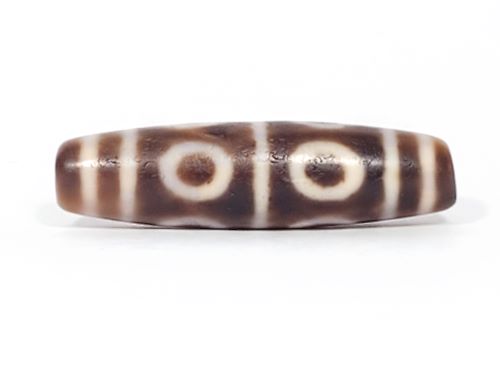Bloodspots
by Eddy Hsu April 06, 2023

Cinnabar Dots, also known as "Bloodspots" or "硃砂" in Chinese, are a popular topic among Dzi bead collectors. However, many people have misconceptions about them. In this article, we'll discuss the facts about cinnabar dots and how to differentiate them from other types of speckles and dots.
Cinnabar dots occur when mercury and sulfur are present during the formation of agate. Mercuric sulfide, also known as cinnabar, is produced when mercury reacts with sulfur. In its purest form, cinnabar is a deep red color and is used to make vermilion pigment. However, it's rare to find it in its purest form in agate, as other materials are usually present, resulting in slight variations in its redness.
Brown spots that resemble rust are usually iron oxides or hydroxides, which are basically oxidized iron. Agate is often manipulated by the addition of iron oxides or hydroxides to create the appearance of bloodspots. Why do most producers of counterfeits not use mercuric sulfide? There are two reasons for this: one, mercuric sulfide is highly toxic, and two, it's more difficult to manipulate into artificially-made agate. Iron dust is a much easier alternative.
Many Dzi dealers try to pass off anything with speckles and dots as cinnabar dots because they fetch much higher prices. However, it's important to note that not all speckles and dots are cinnabar dots. It can be challenging for collectors to differentiate between cinnabar dots and other types of speckles, but it's crucial to do so to avoid buying counterfeits or overpriced beads. Remember, what you want to collect is Dzi with genuine cinnabar dots, not rust speckles!
Understanding the difference between cinnabar dots and other speckles is crucial for Dzi bead collectors. By knowing the facts, you can make informed decisions when acquiring new pieces for your collection. Here are some pictures of genuine cinnabar dots or "bloodspots" for reference.
Leave a comment
Comments will be approved before showing up.
Also in Understanding Dzi Beads
Embracing the Wisdom of Buddhism in The Year of the Snake
by Eddy Hsu February 23, 2025


